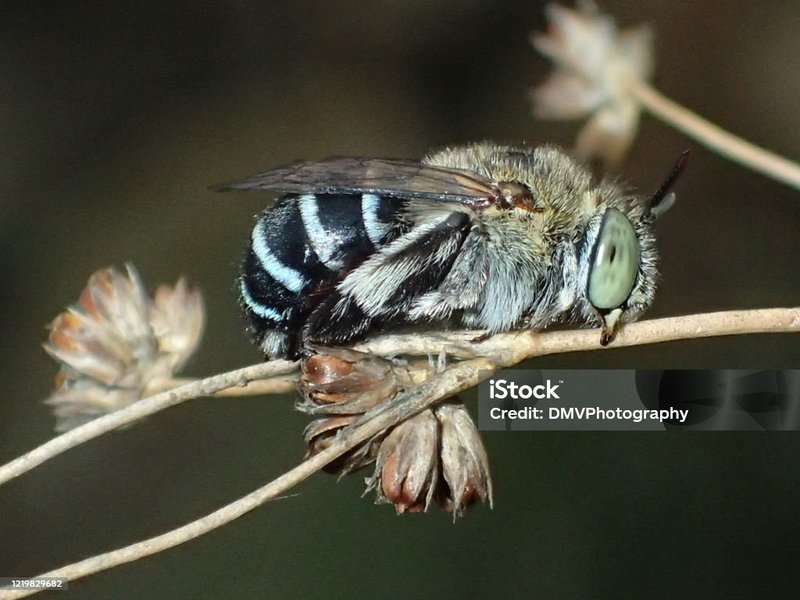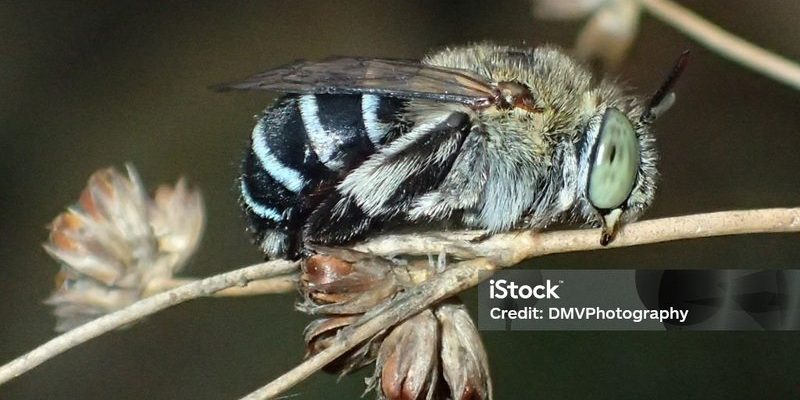
So, what’s the scoop on their habitat and nesting behavior? Let me paint you a picture. Imagine a bustling little city in your backyard, where each bee has its own cozy home and a job to do. Understanding where these bees live and how they build their nests gives us insight into their fascinating lives and highlights why they’re so important to our environment.
Blue Banded Bees are native to Australia and can also be found in parts of New Guinea and the nearby islands. They thrive in diverse habitats, from urban gardens to natural bushland. Here’s the thing: they love environments that are rich in flowers, especially those that bloom in the warmer months. You might spot them buzzing around native plants like lavender, daisies, and even some fruit trees.
These bees prefer areas with plenty of sunlight. Imagine a patch of land where sunlight streams down, warming the soil and encouraging flowers to bloom. That’s the kind of place they call home. They tend to avoid dense forests or heavily shaded areas, opting instead for open spaces that allow them greater access to food sources.
Interestingly, Blue Banded Bees can often be found in urban settings. So if you have a garden filled with vibrant flowers, you might just be lucky enough to have these buzzing beauties visiting your blooms regularly. Just remember, the more diverse the flowers, the happier these bees will be!
Blue Banded Bees are unique when it comes to nesting. Unlike honeybees that live in hives, these solitary bees prefer to build their nests in the ground. They often choose sandy or loamy soil, which is easy for them to excavate. Imagine a little construction site where each bee becomes an architect, digging tunnels and creating cozy chambers.
When a female Blue Banded Bee finds a perfect spot, she digs a series of small tunnels, each leading to a chamber where she’ll lay her eggs. It’s a bit like making small rooms in a tiny house! After laying her eggs, she provisions each chamber with a mixture of pollen and nectar. This food source will nourish the larvae when they hatch.
Sometimes, they may also use abandoned burrows made by other insects, which is a clever way to save energy. By recycling existing homes, they get to settle in without the heavy lifting. This behavior highlights their adaptability and creativity when it comes to survival.
Constructing a nest is no easy feat for Blue Banded Bees. They start by using their powerful jaw muscles to dig through the soil, creating small burrows. Can you imagine the effort it takes? They’re like tiny bulldozers, working diligently to create a safe haven for their young.
Once the burrow is complete, each chamber needs to be stocked with food. The female bee gathers pollen and nectar, working her way from flower to flower before returning to the nest. It’s a busy life! After filling each chamber, she lays an egg on top of the food. This careful setup ensures that when the larvae hatch, they have everything they need to grow.
Here’s a fun fact: Blue Banded Bees can be territorial about their nests. If another bee tries to invade, they might defend it fiercely. It’s a reflection of just how invested they are in the survival of their offspring.
The Role of Temperature in Nesting
Temperature plays a significant role in where Blue Banded Bees can thrive and how they build their nests. They are most active in warm weather, generally from spring to summer, when temperatures are just right. Think about how you feel more energetic on a sunny day; these bees feel the same way!
In cooler temperatures, these bees might delay nesting activities. If the ground is too cold, it can be difficult for them to dig into the soil. Similarly, if the temperature is too high, it can affect their nesting success. As such, these bees are quite in tune with their environment. They know when to kick off their nesting season based on the weather conditions.
This reliance on temperature contributes to their success as pollinators. When the conditions are just right, they emerge in droves, helping plants flourish and ensuring a bountiful bloom in gardens and fields.
The Importance of Blue Banded Bees in Our Ecosystem
Now that we’ve explored their habitat and nesting behavior, let’s talk about why Blue Banded Bees are crucial for our ecosystem. These little pollinators are experts at transferring pollen from one flower to another, which helps plants reproduce. This process is essential for producing fruits, vegetables, and seeds. Without them, many plants would struggle to thrive, which would affect not only our gardens but also our food supply.
Additionally, Blue Banded Bees are great at pollinating plants that other bees might not visit. They can buzz at a higher frequency, which allows them to access the nectar in certain tubular flowers. It’s almost like they have their own secret key to unlock hidden treasures in the plant kingdom!
Moreover, when Blue Banded Bees thrive, they support biodiversity. A healthy bee population leads to diverse plant life, which in turn supports a wide range of other organisms, from birds to small mammals. All these connections highlight the importance of these bees, making the case for their protection even stronger.
How to Encourage Blue Banded Bees in Your Garden
Want to attract Blue Banded Bees to your garden? It’s easier than you might think! Here are a few simple tips to make your backyard more bee-friendly:
- Plant native flowers: Choose a variety of native plants that bloom at different times of the year. This ensures bees have food sources throughout their active season.
- Avoid pesticides: Pesticides can be harmful to bees. Instead, consider using natural pest control methods to keep your plants healthy.
- Provide nesting sites: Leave patches of bare soil for bees to nest in or create small wooden bee hotels. It’s like giving them a cozy apartment!
- Water source: Bees need water too. A shallow dish with pebbles and water can provide them with a safe drinking spot.
Creating a bee-friendly environment not only helps Blue Banded Bees but also enhances the overall health of your garden. Imagine the buzz of activity as these beautiful bees flit from flower to flower, all thanks to your efforts!
Protecting Blue Banded Bees: What You Can Do
As we learn more about the habitat and nesting behavior of Blue Banded Bees, it becomes clear that they need our help. Habitat loss, climate change, and pesticide use threaten their populations. But here’s the good news: there are steps you can take to protect them.
First, supporting local conservation efforts can make a significant impact. Many organizations work to create bee habitats and educate communities about the importance of bees in our ecosystem. Participating in local events or even starting your own initiatives can elevate awareness.
Additionally, consider reducing your carbon footprint. Small changes in your daily life, like using public transportation or consuming less plastic, can contribute to healthier environments for bees.
Lastly, spreading the word is powerful. The more people know about Blue Banded Bees and their habitats, the stronger the collective effort will be to protect them. Your voice can help make a difference!
In summary, Blue Banded Bees are not just beautiful creatures; they play an essential role in our environment. By understanding their habitat and nesting behaviors, we can appreciate these remarkable pollinators even more—and take steps to ensure they thrive for generations to come!

